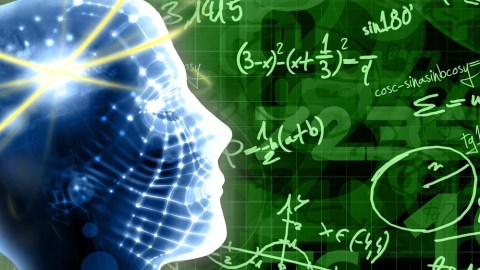We Need a New Kind of Learner

In her recent TED Book, Save Our Science: How to Inspire a New Generation of Scientists, Ainissa Ramirez makes an impassioned call for a recommitment to improve science, technology, engineering, and math (STEM) education in our schools and throughout our society. The post below is an excerpt from the book’s Introduction.
Listen now, for the sound that forevermore separates the old from the new:
“Beep … beep … beep… beep ….”
— NBC radio announcer introducing the first transmitted sounds from the Soviet Sputnik satellite (Oct. 4, 1957)
Just as the first faint electronic sounds from an orbiting satellite marked a transformative advance in international science more than a half-century ago, we are now beginning to hear new signals of a similar dramatic and important shift with our children, their schools, and our educational system.
The 21st century requires a new kind of learner—not someone who can simply churn out answers by rote, as has been done in the past, but a student who can think expansively and solve problems resourcefully. The traditional academic skills of reading, ’riting, and ’rithmetic must be replaced with creativity, curiosity, critical thinking and problem solving, and collaborative and communication skills in order to solve the complex problems of tomorrow.
As a scientist and inventor who holds more than six patents, as a longtime professor at Yale University, and as someone who has always been passionate about getting kids excited about science, I have made it my goal to better explain the need for and importance of STEM.
While the acronym STEM sounds very important, STEM answers just three questions: Why does something happen? How can we apply this knowledge in a practical way? How can we describe what is happening succinctly? Through the questions, STEM becomes a pathway to be curious, to create, and to think and figure things out. Our children need these skills for their future as workers in the changing economy, and STEM is a critical route to get them there.
The components of STEM not only build economies, but also build children’s minds and provide an ecology that is needed for their emotional and intellectual development. STEM supports growth in areas like interacting with others and with one’s surroundings, building concepts, forming connections, engaging in communication, and seeking discovery. These are developmental stages that make children whole, empathetic, resilient, creative, and happy adults.
Now imagine that knowledge is a multisided box. When we teach children to simply memorize material so they can pass tests, we give children access to the knowledge on only one side of the box. So when life tosses this box up (as it certainly will), it may not land on a side that is visible and accessible. In this case, the kids don’t have access to the knowledge.
The end-result answers are not the only things that kids need to know. They need to learn to navigate the course of acquiring knowledge—essentially, to get to the answers by being curious and coming up with a lot of questions, a lot of whys. They need to get accustomed to learning from different directions, playing with concepts, and figuring out how to ask the whys in order to gain access to knowledge. This process is more important than having the knowledge itself, and it is why we must step away from memorization and get back to figuring things out in a variety of ways. This is one of the most important skills of the 21st century.
My training as a scientist allows me to stare at an unknown and not run away, because I learned that this melding of uncertainty and curiosity is where innovation and creativity occur. Science has taught me the power of persistence and patience, and also has shown me that failure is a friend. My curiosity fuels and motivates me more than any shiny bobble could, and my ability to understand and think gives me a love and admiration for the planet matched only by my esteem for artists and saints.
For me, not knowing STEM would be like having a partially translated poem: some of the beauty gets lost. Knowing STEM inspires me to make the world a better place and gives me the tools to do so. My passion is to make it possible for others, especially the next generation, to experience this vantage, too. A STEM mindset is one of the best legacies we can leave our children.
Ainissa Ramirez (@blkgrlphd) is a science evangelist who is passionate about getting kids of all ages excited about science. Before taking on this call, she was an associate professor of mechanical engineering at Yale University. Currently, she is writing a book on the science behind football with NYT bestselling author Allen St. John entitled Newton’s Football (Ballantine books). She is also the author of the new ebook Save our Science: How to Inspire a New Generation of Scientists, in which she advocates on how to humanize the sciences and introduces them into everyday life.





